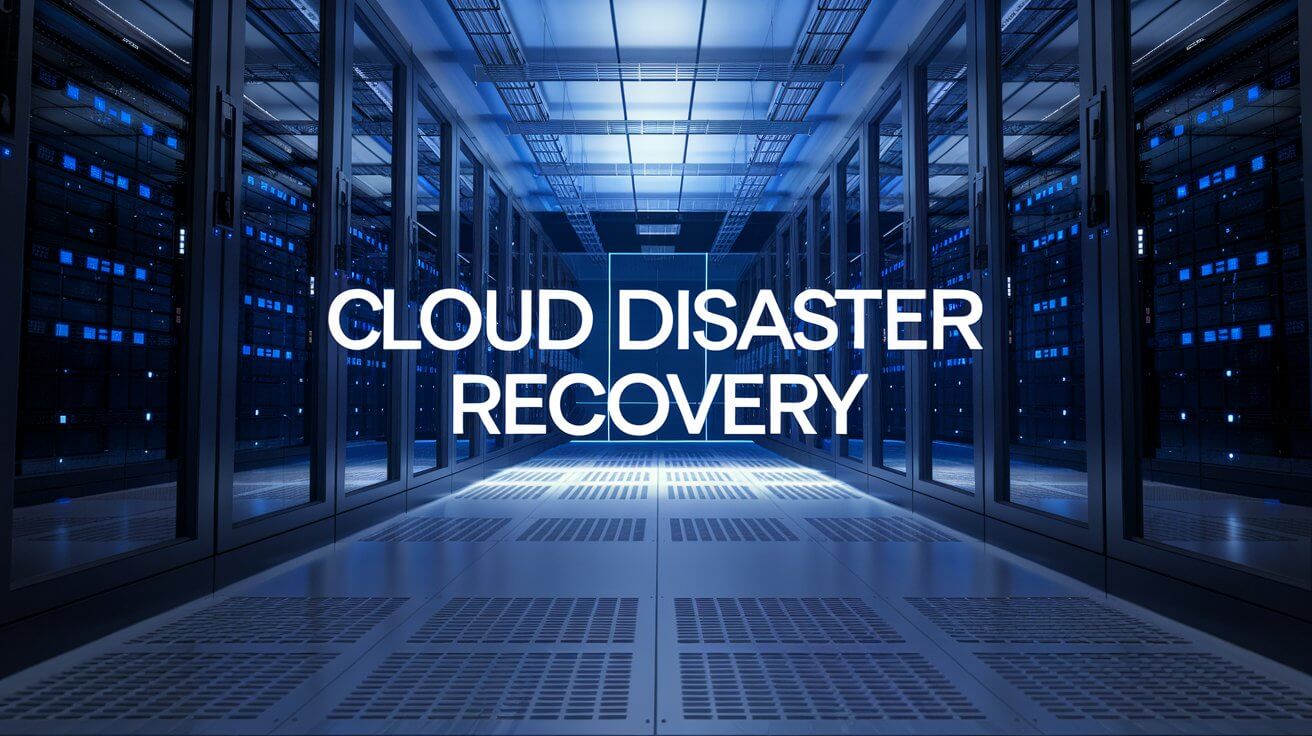
These days, businesses rely on technology and data to function efficiently. However, disruptions, such as hardware failures, cyberattacks, or natural disasters, are always certain and can lead to significant losses. It’s imperative to prepare for such occasions, and this is where Cloud Disaster Recovery (CDR) comes into action.
Cloud Disaster Recovery involves methods and strategies that use remote servers to back up and restore important data and applications during unexpected events. It’s simple to maintain and configure, unlike traditional methods that rely on physical storage and manual processes. CDR offers automated, scalable, and remote capabilities.
According to FEMA, in the US, due to natural disasters, 43% of small businesses were affected, and 29% of them had to close their doors permanently. The stats show that the revenue of Disaster Recovery as a Service is expected to reach 36.69 Billion USD by 2029. In 2019, approximately 36% of the companies worldwide utilized CDR as a service.
What is Cloud Disaster Recovery?
Cloud disaster recovery is a way to protect important data and systems by storing backups in a remote and secure cloud environment. For instance, setting up your phone to automatically back up photos, so if your phone breaks or gets lost, your photos and memories are safe and recoverable. The same principles are applied on a big scale as well.
Companies and businesses are required to safeguard their critical data, applications, and systems. A sudden server failure, power outage due to natural disasters, or perhaps a cyberattack can disrupt operations. That’s why a business must have a recovery plan to handle such situations and get back on its feet as quickly as possible.
Why is CDR important for businesses?
Losing critical data can put a business to a halt. Without the recovery plan, it might take days, even months, for businesses to get back on their feet.
- Data is Everything: Whether it’s operations, interacting with customers, or decision-making, data powers everything. Losing access to it can bring a whole business down.
- Unexpected Threats: Risks like ransomware attacks, power failures, and natural disasters can occur without warning,g and your data can be at risk.
- Cost-Effective and Flexible: CDR provides options that are cost-effective and adaptable to business needs. It’s a practical alternative to high-expenses traditional on-site methods.
- Fast-Recovery: Cloud-based recovery enables quicker access to lost applications and data. It reduces the downtime and helps the business stay operational.
How Cloud Disaster Recovery Works? Breaking it Down
Cloud-based disaster recovery helps businesses access their critical systems whenever needed. This is how the CDR works.
- Data Backup: The data recovery plan includes the process where businesses regularly upload copies of their data and applications to remote servers in the cloud. It ensures that a copy of everything important is safe even if the local system fails.
- Redundancy: Cloud providers have multiple servers located in different areas/regions for storing backups. If one of the servers experiences an issue, the data is still accessible from another.
- Accessibility: As the data is stored in the cloud, businesses can easily retrieve it from anywhere with an internet connection. Quick accessibility gives organizations the flexibility to recover no matter where they are.
- Reliability: Cloud providers have a very solid infrastructure with high standards. The organizations can count on consistent uptime and protection.
The Cost of Not Having a CDR Plan
If an organization doesn’t have a cloud dr plan, it can lead to substantial costs, which include the loss of customer trust and penalties for regulatory non-compliance.
Loss of Customer Trust
When a business cannot quickly recover from a disaster, customers may lose confidence in the organization’s reliability. It results in decreased customer loyalty and bad reputation, and it’ll be costly to come back from.
Penalties for Regulatory Non-Compliance
- HIPAA Violations (Healthcare Sector): The Health Insurance Portability and Accountability Act (HIPAA) states that healthcare businesses and entities must protect patient information. In case of non-compliance, penalties can vary based on the violation’s nature and can reach up to $50,000 per violation, with an annual maximum of $1.5 million.
- Sarbanes-Oxley Act (SOX) Penalties (U.S Public Companies): SOX requires accurate financial reporting and internal controls. Non-compliance can result in fines of up to $5 million and imprisonment for up to 20 years.
- Federal Trade Commission (FTC) Enforcement (U.S. Businesses): The FTC penalizes companies that fail to protect consumer data. For instance, X previously Twitter faced a $150 million penalty for misusing user data.
- California Consumer Privacy Act (CCPA) Penalties: The CCPA imposes fines of up to $7,500 per intentional violation and $2,500 per unintentional violation for non-compliance.
Cloud Disaster Recovery as the Backbone of Business Continuity
Disaster recovery in the cloud is imperative for maintaining business continuity. It ensures that operations can continue with minimal disruption during unexpected events. Let’s see how quick restoration and reduced downtime relate to business continuity.
Link Between Disaster Recovery and Business Continuity
As stated above, CDR focuses on restoring IT systems after a disruption, while business continuity involves maintaining essential functions during and after a disaster. As CDR provides reliable means to recover data and applications swiftly, it ensures both restoration and continuity, ensuring that business operations remain uninterrupted.
The scalability, automation, and geographical redundancy in CDR contribute to speeding up restoration, minimizing human error, maintaining service availability, and efficiently handling varying workloads during recovery. The critical services relying on continuity during disasters include hospitals, online retailers, etc.
In 2023, ransomware attacks caused an estimated $14.7 billion in downtime costs for U.S. healthcare organizations.
The Key Elements of a Cloud Disaster Recovery Plan
An effective cloud disaster recovery plan involves more than just storing backups. It requires strategies to make sure systems can recover quickly and reliably during unexpected events. Below are the core components that make a disaster recovery plan complete and effective.
Replication: Keeping Copies of Data in Multiple Locations
Replication means creating exact copies of data and storing them in different places. In cloud disaster recovery, these locations are often in separate geographic regions to protect against localized disruptions like natural disasters or power outages.
- Data is continuously synchronized between primary and backup servers. If one server fails, the backup immediately becomes active. A global retailer may store data in multiple regions so that an outage in one location doesn’t disrupt operations worldwide.
- This setup provides peace of mind that data is always accessible, no matter what happens at a specific site.
Automation: Systems That Activate Without Human Intervention
Automation is a key feature that ensures disaster recovery plans are effective. It reduces response times by initiating recovery processes automatically when an issue is detected.
- Automation tools monitor systems in real time. If they detect a problem, like a server going offline, they trigger failover processes to switch operations to backup systems. A financial institution using automated failover can prevent interruptions to online banking during server failures.
- Automation eliminates delays caused by manual intervention, reducing downtime and errors during critical moments.
Testing: Ensuring the Plan Works Before Disaster Strikes
Even the best disaster recovery plans are useless if they don’t work when needed. Regular testing helps identify gaps and ensures that systems and teams are ready to respond effectively.
- Testing involves simulating disaster scenarios to evaluate whether backups, failovers, and recovery processes perform as expected. A healthcare organization might simulate a ransomware attack to ensure patient records can be restored quickly and accurately.
- Testing builds confidence and ensures that recovery processes function as planned, avoiding unpleasant surprises during actual emergencies.
Beyond Backups: Modern Innovations in Cloud Disaster Recovery
As businesses evolve, so do the technologies that support disaster recovery. Modern cloud disaster recovery goes far beyond simple backups. The cloud service providers are integrating advanced tools and strategies to improve efficiency and resilience.
AI-Driven Failovers
Artificial intelligence (AI) enhances disaster recovery by automating failover processes. AI systems can detect anomalies and predict failures. It can trigger automatic transitions to backup systems without human intervention. This rapid response minimizes downtime and maintains business continuity.
Hybrid Setups
Hybrid disaster recovery combines on-premises infrastructure with cloud resources, offering flexibility and cost-effectiveness. This approach allows businesses to maintain critical data on-site while leveraging the cloud for scalability and redundancy. Such setups can lead to cost savings and improved recovery times.
Edge Computing
Edge computing processes data closer to where it’s being generated, rather than sending it to a central data center. Here’s why it matters for disaster recovery:
- Real-Time Performance: By keeping operations local, delays are reduced. This is especially useful for industries like healthcare, where split-second decisions depend on fast data access.
- Backup When Central Systems Fail: If the main data center is down, edge devices can keep critical functions running, like monitoring hospital equipment or traffic signals in smart cities.
According to the stats, the Edge computing market is expected to reach $350 billion by 2027.
Decentralized Storage
Decentralized storage spreads data across multiple locations instead of relying on one central data center. This has several advantages:
- Improved Security: Storing data in multiple places reduces the risk of losing everything in a localized disaster like a fire or flood.
- High Availability: Even if one server goes offline, others can step in to provide uninterrupted access.
An example of decentralized storage in action is blockchain technology, which is often used to ensure data remains accessible and tamper-proof, even during outages.
Testing Your Disaster Recovery Plan
A disaster recovery plan is only as good as its ability to work when you need it most. Testing isn't a one-time task. It needs to be done regularly to ensure the plan is effective, up-to-date, and capable of handling real-life scenarios. But how often should you test? And what’s the best way to do it?
Best Practices for Testing Disaster Recovery Plans
- Schedule Regular Tests
Testing once a year is a good baseline for many organizations, but critical industries like healthcare or finance may need to do it quarterly or even monthly. The idea is to test often enough that any gaps in the plan are caught and fixed before they can cause real trouble. - Keep It Realistic
Your test should mimic real scenarios. If the test is too controlled or predictable, you may not uncover potential weaknesses. Introduce unexpected factors to see how the plan holds up under pressure. - Involve Everyone
Disaster recovery isn’t just an IT responsibility. Include all relevant departments in your tests so that everyone knows their role when something goes wrong. - Document the Results
After each test, take the time to review what worked and what didn’t. Use those insights to refine your plan for the next test.
Types of Testing
- Simulation Testing
A simulation is a great way to train your team without disrupting daily operations. In this type of test, participants work through a hypothetical disaster scenario, such as a ransomware attack or a server failure. They follow the recovery steps outlined in the plan and evaluate its effectiveness. - Failover Testing
This is a more hands-on approach. During a failover test, you switch operations from your primary systems to the backup systems to see how well they perform under real conditions. - Walkthrough Testing
It is a simpler option, team members review the plan step by step to identify any obvious gaps or outdated procedures. While not as thorough as other tests, it’s a useful way to keep everyone familiar with their roles.
Exploring Cloud Disaster Recovery Vendors, Providers
The growing need for reliable cloud disaster recovery has led to the emergence of various providers. They offer organizations a mix of public cloud options and specialized Disaster Recovery as a Service (DRaaS) platforms. Each provider caters to the different needs of businesses.
Public Cloud Providers for Disaster Recovery
Public cloud platforms are some of the most popular options for disaster recovery due to their scalability and global availability. Following is the list of providers.
AWS CloudEndure Disaster Recovery:
CloudEndure Disaster Recovery is designed to minimize downtime and data loss by providing fast, reliable recovery of physical, virtual, and cloud-based servers into AWS.
- Supports continuous block-level replication and fast recovery times for various workloads. It ensures that the target machines are up-to-date during a disaster.
- Automates the entire recovery process. It reduces manual intervention and potential errors.
- Supports a wide range of applications and databases such as Oracle, MySQL, SQL Server, and SAP
Microsoft Azure Site Recovery:
Azure Site Recovery helps ensure business continuity by keeping workloads running during outages
- It has a very simple deployment process. Organizations can set up replication of Azure VMs to different regions directly from the Azure Portal.
- It automates failovers and recovery processes and it makes it easier for the organizations to maintain availability during interruptions.
- It minimizes recovery issues by sequencing the order of multi-tier applications running on multiple virtual machines.
- It allows organizations to ensure compliance by testing disaster recovery plans without impacting production workload or end users.
Google Cloud Storage:
Google Cloud Storage is a managed service for storing unstructured data. It is suitable for backups, archives, and big data analytics.
- GCS is designed for durability and availability. It ensures data is accessible when needed.
- It accommodates growing data needs as it offers storing objects up to terabytes in size.
- When it comes to security, GCS offers secure-by-design features to protect data, with advanced controls to maintain privacy and security against leaks or compromise.
- GCS offers built-in machine learning featuring integration with analytics and AI.
Google Cloud Persistent Disk
Persistent Disk provides scalable, reliable block storage for virtual machines and applications on Google Cloud.
- It is designed to withstand failures, replicating data within the same zone to ensure integrity and protection against infrastructure issues.
- Persistent Disk offers high-performance storage options including SSD-backed disks for latency-sensitive applications. It also accommodates large-scale storage requirements as it supports disks up to 64 TB.
Final Thoughts
Cloud disaster recovery has become an essential part of protecting organizations against disruptions. Businesses have the tools to safeguard their data and operations effectively. The key lies in choosing the right approach, combining reliable replication, automation, and regular testing.
Each industry, whether healthcare, finance, or e-commerce, faces unique challenges, but the common thread is the need for continuity. Disruptions can lead to downtime, financial losses, or regulatory penalties. A strong disaster recovery plan, tailored to the specific needs of the business, reduces these risks.
Ready to protect your business? The Scarlett Group begins with a thorough IT assessment to develop the right disaster recovery solution for your needs. Contact us today to schedule your comprehensive evaluation and strengthen your business continuity.



